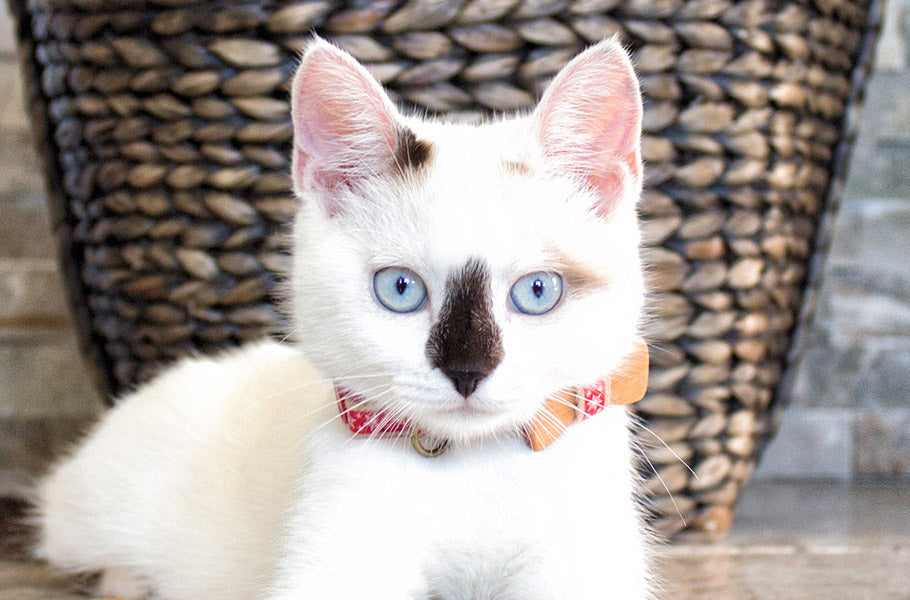Cats are enigmatic creatures, captivating us with their unique personalities, graceful movements, and, of course, their striking appearances. Among the many facets that contribute to a cat's allure, genetics play a fundamental role in determining their coat colors, patterns, eye colors, and even breeds.

Understanding feline genetics not only enriches our appreciation for these mesmerizing animals but also aids breeders, veterinarians, and cat enthusiasts in unraveling the mysteries behind their diverse appearances.
Coat Colors
The spectrum of coat colors exhibited by domestic cats is remarkably broad, ranging from solid blacks to vibrant oranges, delicate silvers to luscious creams. Behind this visual diversity lies a complex interplay of genes that determine the production and distribution of pigments in a cat's fur.
The primary pigments responsible for coat coloration are eumelanin, which produces black or brown hues, and pheomelanin, which yields red or yellow tones.
The genes controlling eumelanin and pheomelanin production operate in intricate pathways, leading to various coat color outcomes. For instance, the Agouti gene regulates the distribution of pigments along the hair shaft, resulting in banding patterns seen in tabby cats. Furthermore, mutations in specific genes can produce unique coat colors, such as the dilution gene causing the lightening of black fur into gray (blue) or chocolate fur into lilac.
Patterns
In addition to coat colors, the arrangement of pigments across a cat's fur gives rise to distinctive patterns that further enhance their visual appeal. One of the most recognizable patterns is the tabby, characterized by swirling patterns, stripes, or spots overlaying the base coat color. The tabby pattern is governed by multiple genes, including the aforementioned Agouti gene and the Tabby gene (T), which determines the intensity and distribution of striping.
Beyond tabbies, cats exhibit a range of other patterns, including solid, bi-color, calico, tortoiseshell, and pointed (as seen in Siamese cats). These patterns result from the interaction of various genes, such as the White Spotting gene responsible for creating areas of white fur and the Temperature-Sensitive gene that causes coloration to appear on specific parts of the body, influenced by temperature variations.
Eye Colors
The mesmerizing gaze of a cat is often accentuated by the color of its eyes, which can vary from deep amber to vivid green, captivating blue to striking gold. Eye color in cats is primarily determined by the presence and distribution of pigments within the iris.
The OCA2 gene, for example, controls the production of melanin, which contributes to eye coloration.
Furthermore, the presence of the white spotting gene can lead to heterochromia, a condition characterized by two different colored eyes in the same cat. This phenomenon adds an additional layer of intrigue to a cat's appearance, further highlighting the complexity of feline genetics.
Breeds
Cat breeds represent the culmination of centuries of selective breeding, resulting in distinct physical characteristics, temperaments, and genetic profiles.
From the regal Persian with its luxurious coat to the sleek Siamese with its striking blue eyes, each breed showcases a unique combination of traits shaped by human intervention.
Breeding practices aim to perpetuate desirable traits while minimizing genetic disorders, although unintended consequences such as inherited health issues may arise from selective breeding.
For instance, breeds like the Scottish Fold, known for their folded ears, carry a genetic mutation associated with cartilage abnormalities, leading to potential ear and joint problems.
Advancements in Genetic Research
Recent advancements in genetic research have revolutionized our understanding of feline genetics, offering insights into the hereditary basis of coat colors, patterns, eye colors, and breed-specific traits.
Techniques such as genome sequencing enable scientists to pinpoint the precise genetic variations responsible for particular phenotypes, shedding light on the molecular mechanisms underlying feline diversity.
Furthermore, genetic testing has become increasingly accessible to breeders and pet owners, facilitating informed breeding decisions and proactive management of genetic health conditions.
By identifying carriers of recessive genes or predispositions to certain diseases, genetic screening empowers breeders to breed responsibly and ethically, promoting the long-term welfare of feline populations.
Conclusion
The study of cat genetics represents a captivating journey into the intricate mechanisms that shape the appearance and behavior of our feline companions. From the rich tapestry of coat colors, patterns, and eye colors to the diverse array of breeds, each cat embodies a unique genetic blueprint honed by millennia of evolution and human influence.
By delving into the realm of feline genetics, we deepen our appreciation for the beauty and complexity of these remarkable creatures while advancing our ability to care for them responsibly and compassionately.
